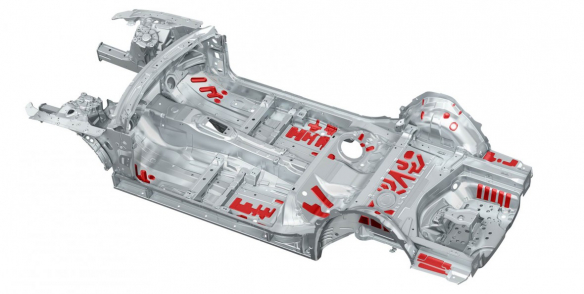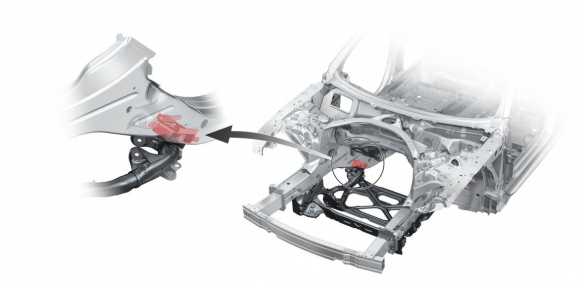Vibration behavior
Undesired resonant vibrations in the body are strictly taboo. At Audi a great deal of work goes into preventing or minimizing such vibrations. In the A8, for example, the development engineers specifically analyzed and minimized all vibration levels at the contact points between the passengers and the body – the floor panel, the seats, the steering wheel, and the inside mirror.
The development team also attaches great importance to local rigidity. All points at which force inputs take place when the car is in motion are reinforced to the necessary extent. The aim is to prevent as much energy as possible from being transmitted further into the structure, and to distribute unavoidable force inputs among several noise and load paths.
In the A4, for example, the front axle support conducts the pulses it absorbs from the wheels into a framework consisting of longitudinal members and the tunnel support. This effectively reduces rolling noise from the tires in important areas. In the A7 Sportback, the engineers consistently used hydraulic damping elements for the axles and the subframes, and all bearings used for the engines are hydraulically damped. The engineers tuned these elements using advanced simulation methods and Audi’s state-of-the-art comfort test bench.
The larger body cavities such as the sills and posts, which could also generate undesirable vibration, have been divided up in many Audi models by inserting a series of partitions. Special foam inserts and acoustic partitions completely isolate the interior from the exterior. In these areas, the development team places maximum emphasis on the use of lightweight materials such as innovative microfiber fleece. The wheel well shells and underbody cladding also demonstrate acoustically effective properties. Fine seam seals close joining sites and seal out airborne sound.
Status: 2011

